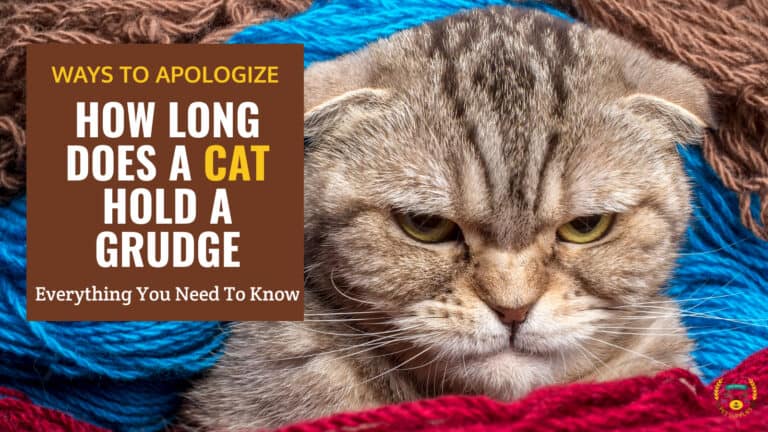How Much Is a Bengal Cat?
Last updated: January 12, 2024

Summary
- Stunning Bengal cats: exotic look, hefty price tag.
- Hybrid breed with leopard-like coats, playful personalities.
- Price varies by generation: F1 priciest ($5k-$25k+), F4 most affordable ($800-$1,500).
- Beyond kitten cost, factor in food, toys, vet care, and potential home repairs.
- Choose a reputable breeder: TICA registered, health-screened cats, responsible practices.
The Bengal cat is one of the most popular pedigreed cat breeds today. These exotic-looking cats are highly sought after for their wild appearance - the striking, vividly patterned coats reminiscent of Asian leopard cats. What was once a rare hybrid resulting from breeding domestic cats with Asian leopards has now become a favorite for cat lovers around the world.
However, the exotic heritage of the Bengal comes at a price - this is one of the most expensive cat breeds to own. Due to small litter sizes, complex breeding programs required to achieve their look, and growing popularity, Bengal kittens can cost anywhere from $1,000 to $25,000 depending on factors like filial generation, coat patterns and titles.
This article provides an in-depth look into Bengal pricing - what impacts the costs, price ranges for different generations, other expenses to factor in beyond the purchase price, as well as signs of an ethical breeder.
Read on for everything you need to know before bringing one of these unusual spotted beauties home.
Bengal Cat Breed Overview

The Bengal cat breed was developed by breeders seeking to blend the exotic look of Asian leopard cats with the gentle, affectionate nature of domestic cats. The result is a stunning cat that looks wild but makes a loving pet.
History and Origins
The first Bengal cat was born in 1963, when amateur breeder Jean Sudgen crossed an Asian leopard cat with a black domestic shorthair. Her goal was to try producing a cat with the leopard-like coat of the Asian cat, but the tame personality of a house cat.
Many breeders worked over subsequent decades to stabilize the hybrid cross and achieve a fertile Bengal breed. These cats became TICA registered in 1983, gaining popularity thanks to their leopard-esque spots and lively personalities. Today, they are the most popular pedigreed cat.
Appearance
Bengals have a distinctly wild appearance, with large, vividly patterned coats. Their background as a hybrid of a leopard cat is apparent at a glance. Common colors and patterns include golden brown spotted tabby, charcoal spotted tabby, snow spotted tabby, and silver marbled. No two coats are identical.
Other features include a muscular, athletic build, thick tail, facial ruff, and rounded ears. Eyes are often a vivid green or yellow. Their Size ranges from 10-25 pounds when fully grown.
Personality
While their look is feral, Bengal personalities are highly affectionate, playful, and social. They bond closely with their families and tend to choose a favorite human.
Bengals are extremely active and agile, requiring lots of interactive toys and exercise opportunities. When their high-energy needs are met, they make wonderfully entertaining, devoted companions. If neglected, problem behaviors can develop. Overall, it is a highly intelligent, curious breed that thrives on attention and physical activity.
Bengal Generations and Pricing

Bengal cats can vary greatly in price depending on what filial generation they belong to. Understanding the terminology for the generations helps explain factors affecting Bengal costs.
When bringing home your new Bengal kitten, having the proper essentials is key to helping them feel comfortable and settled. Things like food bowls, litter boxes, scratching posts, toys, a bed, and more ready ahead of time to ensure a smooth transition are covered in our guide on the essential items to buy when bringing a new cat as a pet.
F1 - F4 Generations
Bengal generations indicate how far removed cats are from the original crossing between an Asian leopard cat and a domestic cat:
- F1: An F1 Bengal is the first generation hybrid offspring from crossing a domestic cat with an Asian leopard cat. F1 Bengals retain 50% of the Asian leopard cat genes and are allowed to be registered with TICA.
- F2: Occurs when two F1 Bengal cats are mated. F2s have 75% domestic genes and 25% Asian leopard genes.
- F3: The offspring of an F2 Bengal bred with either an F1 or another F2. It has 12.5% Asian leopard genes.
- F4: Bengal cats with an F4 filial status have two F3 parents. They are considered almost entirely domestic both genetically and in temperament.
Later generations (F5, F6, etc.) are also sometimes used by breeders. The higher the filial number, the more generations are removed from the original leopard cat crossing.
Average Price by Generation
As F1 Bengals contain more wild genetics, are harder to produce, and have bolder markings, they are generally the most expensive:
- F1 Bengal: $5,000 - $25,000+
- F2 Bengal: $2,500 - $7,000
- F3 Bengal: $1,500 - $3,000
- F4 Bengal: $800 - $1,500
Popular colors and patterns also impact price. Highly sought-after "snow" Bengals can command premiums, for example. Show and breeding potential also affect costs.
Factors Affecting Price
Specific factors making a Bengal kitten more or less expensive include the following:
- Filial generation
- Rarity of color/pattern
- Confirmation to Bengal breed standard
- Parent show titles/championship pedigree
- Breeder reputation and ethics
- Regional average pricing
- TICA registration/certifications
Other Cost Considerations

While the upfront cost of purchasing a Bengal kitten is the most sizable expense, owning one of these cats comes with additional ongoing financial responsibilities.
Upfront Costs
There are various upfront costs associated with getting a new Bengal kitten outside of just the purchase price:
- Purchase price of the kitten
- Shipping expenses if buying from a distant breeder
- Supplies like food bowls, litter boxes, toys, scratching posts, kitten-proofing household items, etc.
- Vet fees for initial check-ups and vaccinations
- Registration with the cat association if wanted
First-year costs for a Bengal kitten can easily total $2000+ when accounting for everything needed.
Ongoing Expenses
Annual costs of Bengal ownership over their 10-16 year lifespan involve:
- Premium foods: Quality protein sources like raw diets and meat mixes will cost $150-$300+/year
- Toys and furniture: Active Bengals destroy toys. Frequent replacements can cost $200+/year
- Grooming: For nail trims and brushing, expect to pay around $150-$300+/year
- Medical: Check-ups, vaccines and illness treatment should cost an additional $400+/year
- Damage repairs: Bengal scratching can damage home furnishings over time, so keep that in mind.
Bengal maintenance costs are higher than many breeds due to their activity levels and curious, destructive tendencies without enough stimulation. Proper preventative care also maximizes longevity. Realistically budget $1000 or more per year.
Signs of a Reputable Breeder

With Bengal kittens ranging anywhere from $1000 to over $25,000, it is crucial to find an ethical, responsible breeder.
What to Look For?
Here is a list of hallmarks of a quality Bengal cat breeder:
- TICA registered cattery - Membership indicates a commitment to Bengal breed preservation
- Health screened parents - Tests for genetic diseases like HCM
- Vaccinated and dewormed kittens - Indicator of preventative health commitment
- Spay/neuter contract - Reduces accidental breeding of pet Bengals
- Takes cats back - In case you can no longer care for your Bengal
- Asks buyer questions - Vets potential owners to find the best home
- Clean cattery - Sign of proper husbandry and care
Avoid breeders who seem purely profit-driven or don't ask questions. An ethical breeder wants their Bengals to have a safe, healthy life in a caring forever home.
Questions to Ask
The main topics to inquire about from a breeder regarding the parents/kittens are as follows:
- Health testing performed, and the results
- Vaccination protocols
- Average adult size of past kittens
- Activity levels and personalities of the parents
- Why they breed Bengals
- Other services they provide like grooming tutorials
Developing an open, educational dialogue sets the foundation for a trusting relationship and smooth transition of bringing home your Bengal.
Frequently Asked Questions
Here are common questions that prospective Bengal cat owners usually have. We provided answers to ensure you are well-equipped for the adventure of owning a Bengal cat.
Do Bengal cats have health problems?
Like all pedigreed cats, Bengals can be prone to some genetic conditions, most notably hypertrophic cardiomyopathy (HCM). Buying from a breeder who screens for HCM reduces risk. However, overall, Bengals are quite healthy.
How long do Bengal cats live?
With proper care, diet, exercise, frequent vet check-ups, and yearly vaccines, the average Bengal life expectancy is 10-16 years.
Are Bengal cats hypoallergenic?
No, Bengals still produce the Fel d1 protein that triggers allergies, despite having some DNA from Asian leopard cats. They do shed less than some breeds but are not hypoallergenic.
Can Bengal cats live outdoors?
While their look may fool some into thinking they could survive outside, Bengals are domestic cats who fare better when kept safely indoors. Their risk for injury and illness is lower inside.
Are Bengal cats high maintenance?
Bengals have extremely high activity needs - more than many cat breeds. Keeping them stimulated with interactive play, puzzles, tall cat trees, and frequent exercise is key to preventing behavior issues. So, while very rewarding to own, they do require more effort and environmental enrichment than lower-energy breeds.
Final Thoughts
Bengal cats command some of the highest price tags in the pedigreed cat world, with kittens ranging from $1,000 all the way up to $25,000 for rare first-generation cats with an Asian leopard cat parent. Much depends on their filial status and how far removed they are from that original crossing back in the 1960s that led to this beloved breed.
Do ample research to find responsible Bengal breeders, learn about filial generations, and prepare for the financial commitment. While not cheap, buying from an ethical source means gaining a wonderful companion.
Thanks for reading!






